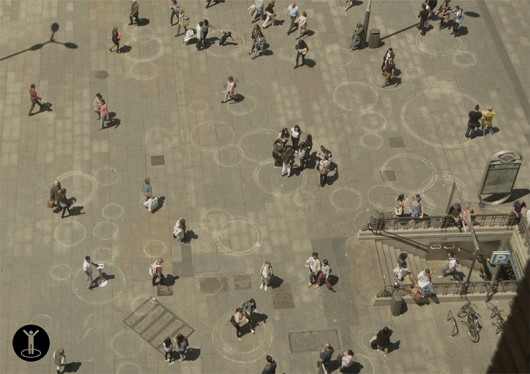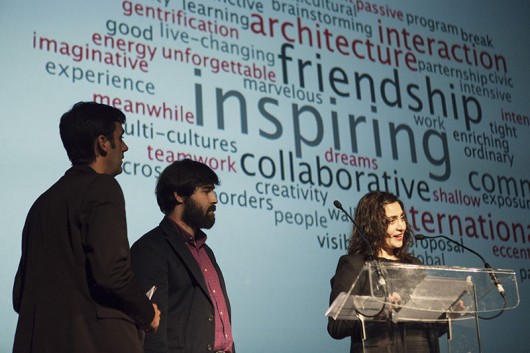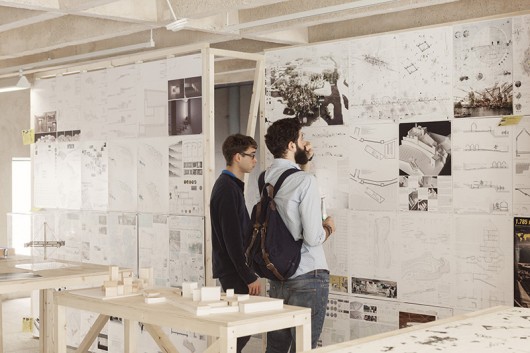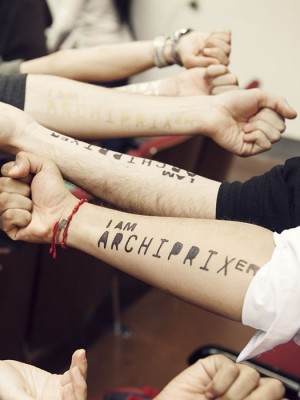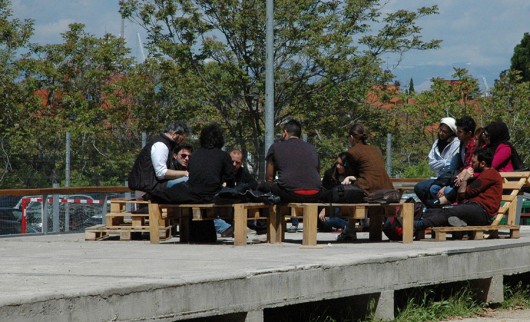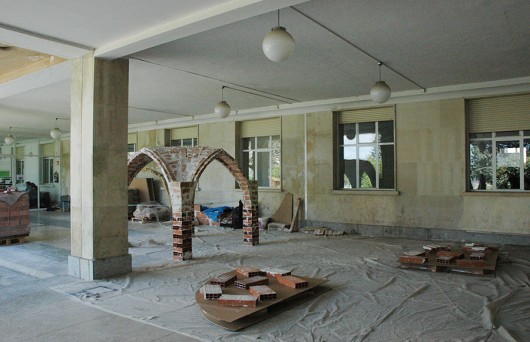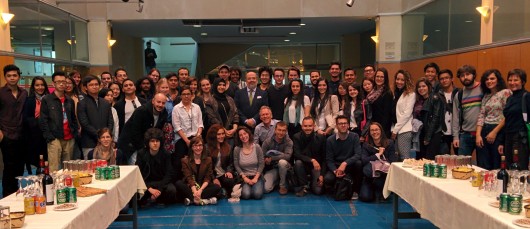The Archprix International workshops started with a clear question: "Although Madrid has no top down strategic project as a city, its' citizens are already building bottom up partial alternatives. But is there a third way? Is it possible to put into practice a multi-directional approach to city making in which strategies and tactics can coexist and relate? Can the architect play an intermediate role in this city making process?" The participants of the workshops - the emerging stars of architecture, urbanism and landscape design (although stardom is not what they aspire) - encircled this question through 10 different briefs. Their answer to the question seems to be unconditionally positive. The results show at least three relevant strategies for the aspired intermediate role.
Mapping reality
The first strategy might be called ‘mapping reality'. Design and design intelligence is used to give insight into the (top-down) mechanisms underlying the production of contemporary urban reality. Insight in the production of 'conceived' space, and also insight in the way it’s been used. This strategy is driven by the hypothesis that any attempt to force top down planning and bottom up initiatives into some form of conjunction can only succeed when it’s based on the knowledge of the forces driving the production of space. The focus on 'the mechanisms of power' that could be detected in five workshop results, probably derives from the fact that they are the most secret, the most hidden from the eye of the urban beholder.
Creating awareness
Lodging urbanism in Madrid explored and mapped the lost logic of the hotel industry in times of alternative models like 'couch surfing' and airbnb. The enormous competitiveness of the alternative models lead to partially empty hotel buildings that can be colonized by bottom up initiatives.
They shall not pass produces a beautiful and enticing 'Hidden map of Madrid' in which the group reveals the devastating impact of the crash of the city’s speculative development model. Mapping this impact creates awareness of, and insight in, the opportunity the urban ruins (the leftovers of neo liberalism) offer for the claims of the many existing citizen initiatives.
The welcome hotel mapped the grim world of evictions in Madrid and presented it in a quite stunning presentation. Not only did the group succeed in making this process visible, they also used their more traditional design capacities in an attempt to put this question high on the urban agenda.
Beyond mapping
Analogical smart cities went a step further. This group also mapped some quite interesting and relevant aspects of contemporary production of space: open wifi hotspots, tourist routes in relation to forms of mobility, and the dimensions of 'personal space'. They translated this collected knowledge and insight into real interventions in public space. The real city became their mapping medium. By doing so, creating awareness not only becomes a physical, even bodily experience, it also gives the design(er) the opportunity to go beyond the confines of 'conceived space' and interfere with everyday reality of 'lived space' and, even, 'perceived space'. It’s an action based strategy that shows the power of design thinking and relates it to different forms of space production.
Know your adversaries
Looking at the product
The multiplayer city-group designed - an actor oriented game on the complexity of city production - one might suspect a strategy belonging to category directed at intervening in the negotiating and decision making process of the production of space. However, the game focused primarily on creating awareness through playing the game and can therefore be considered as a form of mapping. The game maps the mechanisms underlying the production of contemporary urban reality. Most inspiring is the attempt to define the different roles in city making - from citizen via mayor to developer - thus also creating awareness about the different actors and their desires: the 'good', the 'bad' and the 'ugly'.
Intervening in-between
A second strategy was deployed by the
Meanwhile Operacíon Castellana-group: intervening in top-down planning processes. Within a long term planning process the group proposed a broad scale of small and medium scale interventions that take place in a short and medium time frame. The interventions relate to the needs and longings of the citizens from the surrounding districts, or relate to the ambitions formulated in the master plan for the area. In several cases they serve both. The objective of the interventions is threefold. On the one hand they aim to urbanize the development area in the 'in between time', in order to prevent it from becoming a closed off wasteland for years. At the same time they intend to prepare the city and its' citizens for a future with the intended project. Finally, it offers those responsible for executing the master plan the possibility to (re)evaluate the project during the process based on the success and significance of the interventions, and thus alter (parts of) the initial master plan. Especially this aspect of the proposed strategy is worth reflecting upon for it tries to create a productive and pro-active form of bridging between top-down and bottom-up that one rarely sees.
Defining possible futures
A third strategy was proposed by the
Imaginary pragmatics-group: directing the power of design and designerly thinking towards imagining and conceptualizing possible futures. In this specific case, the group devised a possible future by addressing some real and big societal and ecological issues as well as the micro-social practices of the production of space. These tempting futures were then backed by facts and figures. This project consciously takes an explicit position through the design intelligence and instruments - e.g. the specific use of the scenario method – that are used. It states that the architect, urbanist and/or landscape architect should focus on radical alternative futures. A radical alternative to the dominant ways space is produced in the contemporary city. Designing an explicit and radical alternative leads, effectively, to postponing the compromise (the imagined and conceptualized possible future does not try to define a compromise between the top down and bottom up desires) and thus brings the design into the realm of the political.
Open up for further debate!
This 'political' aspect of the groups' proposal is relevant for further debate on the position a designer can take. On the one hand it raises the question as to whether the power of design should be seen and deployed as an 'operative', or 'bonding', power - at the service of a specific interest - or as an 'integrative', or 'bridging', power - aiming at connecting, or even reconcile different, or even conflicting, interests within the design (the imagined and conceptualized possible future). It also raises the question about the specific definition of the position taken. Bringing a radical alternative future into the (political) debate with 'other' possible futures, presupposes the will and ability to accept the legitimacy of the possible futures of 'the adversary'. The embeddedness of the design craftsmanship in the sphere of the 'world of bottom-up' was quite prevalent in the workshop. It is exactly from that perspective that I hope the whispering voices of 'The multiplayer city'- and the 'Meanwhile Operacíon Castellana'-group will be heard.
Chris van Langen is Head of School of the Rotterdam Academy of Architecture and Urban Design.
